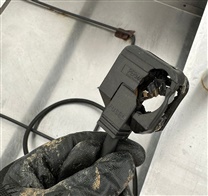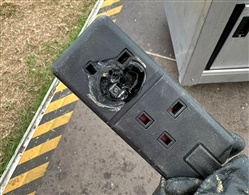I'm intending to use a small CNC at home. It needs a 16A single phase supply and preferably I'd just connect via an interlocked EN 60309 commando socket, but that would be a departure from 553.1.201 because commando sockets aren't shuttered.
Ironically I would be okay installing a European Schuko on a 16A radial - because they are shuttered but clearly not particularly robust for a workshop and not polarised either. Maybe get an IEC 60906-1 from South Africa.
Of course I can risk assess a departure from 553.1.201 given that interlocking offers a greater level of safety than shutters.
I could use a 15A BS 546 but these days protective devices are harmonised at 6, 10, 16A etc. And BS 546 / BS 1363 haven't kept up, so a 15A wouldn't have sufficient protection and in any case i think an interlocked commando offers a greater level of protection.
I presume many electicians just put commandos in people's garages without even considering that they're departing from BS 7671.
I get the impression 553.1.201 is a old provision which when read today has unintended consequences. It is of course a national departure from HD 60664.
What are people's thoughts on using commando sockets in a dwelling? In terms of the departure risk assessment, are there circumstances in which an interlocked socket may offer less safety than a shuttered socket?

